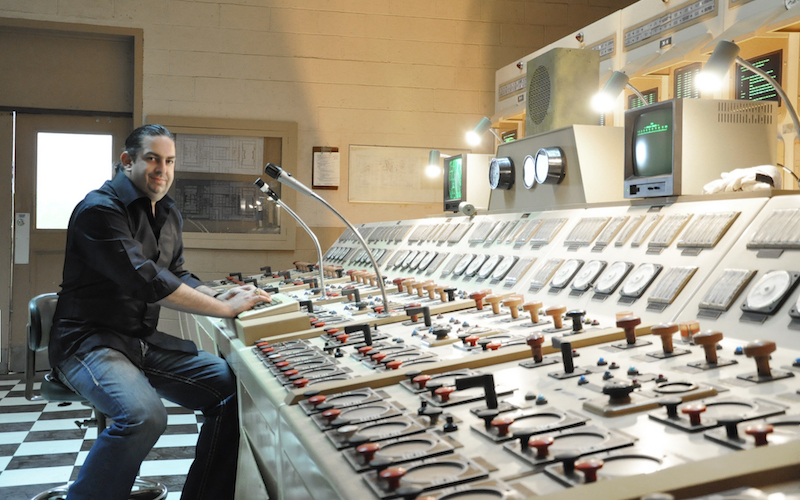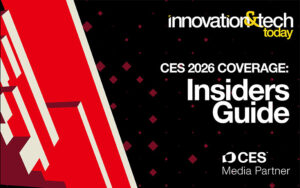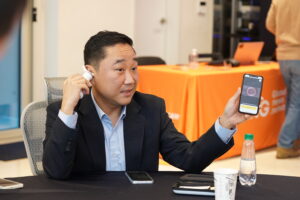Hollywood aims to make things real. But not so real that moviegoers get a blueprint on weapons crafting or explosives.
At least that’s the takeaway from an interview with Scorpion Studios’ founder, Walter O’Brien, who might sound familiar from the Scorpion television show franchise that ran four seasons on CBS Network. The executive producer of Scorpion launched a consulting studio (ScorpionStudiosInc.com) that teaches Hollywood how to make tech look real on the big screen, racking up consulting gigs with Sony and Columbia Pictures where he is credited as Technical Advisor for Spiderman: Homecoming and this year’s blockbuster, Venom.
Innovation & Tech Today: For those who don’t know you yet, tell us a bit about your background.
Walter O’Brien: I’m the executive producer and inspiration behind Scorpion, a television show that aired for four seasons in over 180 countries. I run a few companies including Scorpion Computer Services and Scorpion Studios – the latter of which consults TV and major motion picture studios on technical realism.
I&T Today: You’re like James Bond’s “Q”, with all the gadgets and lasers, except your “James Bond” is the writers and film studios themselves. Give us an example of how you work.
WO: So let’s say it’s the next Ocean 11 or Ocean 8 movie that they’re coming out with. They want to break into a casino and they want to make it cool. So, by talking to us, we help break the story by coming up with modern day ideas. “What if the casino is seasteading 21 miles off shore – in international waters so there’s no taxes and the casino is technically its own start up country rather than company, not subject to the laws of any other country?”
I&T Today: Yes, how would that work?
WO: It could be based on an oil rig platform. That way it’s stable and you could build on it or put a bunch of oil rigs together and create a little village.
Maybe this casino runs entirely on cryptocurrency, because it could if it was based in our near future. It’s tax free and international so it’s called the Bitcoin Casino. Based on how Bitcoin works – how could someone, in a sophisticated way, cheat the casino?
If the writers wanted multiple threads to the story, then what if the son of the father who owns the casino – who’s been kind of chilling out – ended up as the casino went public with an “initial coin offering” (ICO) (cryptocurrency based instead of traditional equity shared based initial public offering (IPO)) then he could actually front run the proof of work cryptocurrency settlement process and end up owning 51 percent of the coins therefore doing a modern-day hostile takeover of his dad’s offshore casino.
Then after he gets the casino, his dad hires a team of people to come in and decide to rip off the casino Ocean’s style for revenge.
So now, how do you rip off a Bitcoin-based casino that’s offshore, that’s on water? You’d need submarines and stuff just to get to it. What are ways that they could breathe underwater long enough to be able to weld and cut underwater to get into the casino?
I&T Today: With whom at movie studios do you work with?
WO: Producers and, more directly, the writers. So, that was an example of what would happen with a Hollywood writer asked, “Hey, how do we do the next Ocean’s movie and make it cooler and more realistic?” We’d have just given them a whole new plot development that incorporates the latest tech with a story that no one’s seen in movies yet. Then the research starts. The writers ask us to put together the language around hacking the ICO, how could they show visual graphics of what’s happening so the audience can follow it simply?
I&T Today: How can you share this if you’re work is often restricted by confidentiality agreements?
WO: Simply because I’m not working on the next Ocean’s movie so this was a “live” example of how quickly we can help break a new script. Often we will be asked to put together a particular device from everyday objects for the movie. The protagonist has to do a MacGyver to pull together a special kind of device.
The writers just tell us what the device will be used for – and let’s say it’s a special kind of timer for a bomb, or to release smoke at a particular time, or a flat jack that can lift up a door so they can crawl under it to break into a museum. What would that be made out of?
What would be small enough and strong enough. If it was made from titanium, where would you get titanium from if you’re an everyday person on the street? What else would you need then? What kind of pumps and jacks do you need and what would that look like? How could we make wearable like a backpack?
I&T Today: Your work often begins with research?
WO: Yes. So we would get our researchers to come back with: “OK there’s three kinds of metal you can use – and yes, carbon fiber is strong, as that is what the writer wanted to use – but carbon fiber is too brittle to be used in a jack situation without it crumbling.”
So we’d often correct things if the writers initially thought, “Carbon fiber is strong, we’ll use that.” That might work if building an Indi race car but you can’t use it for a jack to lift up a 5-ton door.
Then we would literally reverse engineer a jack and go: “OK, well if you got a vacuum cleaner from the dump, then you could use the hoses and pipes from that for some of the pneumatics. And if you had an old VCR, you can use some of the electronics in there together with the digital display and the screen. If you got an old printer and you stripped the precision motors out of the printer then you could dynamically position the jack via remote control. Let’s say the jack had to come out, like a robot, and crawl underneath lasers to the door.
So now the audience – in their heads – can look at this and go, “Oh, that’s clever,” and. “I can relate to it and I know what those things are and it’s kind of feasible that they could all plug together.”
We have to walk that line between being accurate enough for the audience to buy it, but not be so accurate that someone can go home and hack a casino by just following what we wrote. So, we always have to leave some piece out, so it doesn’t really work. We’ve had to be careful with that because some of the things we came up with would actually work. So, for legal reasons we always have to leave one important element out.
And so then they’d have things like: This guy needs to put his crew together. So, if he was putting a crew together, who would he need? What kind of people? Does he need a mechanic? Does he need a specialist in glues or gasses or whatever? Now that we understand what the problem is they’re trying to fix or the effect they’re trying achieve, we’d ask: “OK, what’s the disparate crew and where would they likely be found when they are being recruited?” It’s the classic movie montage where you’ve got to recruit your reluctant “A team.”
What kind of places would these people be in? What would they look like? What kind of shape, size, ethnicity, et cetera, would they be so as to be plausible as a materials scientist or a cryptocurrency expert? What language do they use when they meet to get his attention? So this is the real stuff that we do at Scorpion Studios.
We then generate the conceptual graphics of each element and we can present something that looks like a Ghostbusters backpack so the thing fits on their backs. They can carry it into the place, perhaps as one piece it would be too heavy so maybe we do something clever where all four of them are wearing weird backpacks. When they put them all down it all fits together and forms the jack robot and the audience suddenly realizes, “Aha, now I see what it is.”
I&T Today: You’re like the writers’ best friend.
WO: We do save them months of research and provide technology twists they wouldn’t otherwise be aware of. We write a “Bad Dialog” version of the script to give them the technical structure and language then the writers can rewrite it and add emotional aspects of the story.
I&T Today: It’s a collaboration.
WO: It’s brainstorming and sparking off each other’s ideas to form a better movie. Once the story is formed we help all the way through to production: the technical details, the weapons, the visuals, the special effects, the appropriate sounds. Then, talking to the actors to explain what the materials scientist is actually doing or saying. Even in editing, if they have to cut a piece out for time, which piece can they cut out that won’t cause the whole thing to not make sense anymore?










